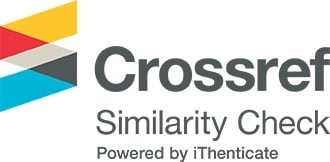Plagiarism check
Plagiarism
We are using iThenticate®

Partnership with Crossref gives iThenticate access to an unparalleled database of high quality scholarly content. On top of that, iThenticate is incorporated into the top publishers’ workflows. IEEE, Springer Nature, Wiley, and thousands more trust iThenticate to identify unoriginal work. This combination gives iThenticate users an opportunity to utilize the same software as their preferred publisher to check for plagiarism, which gives a higher level of confidence and could, ultimately, boost the chances of acceptance.
Actions taken in the case when the article submitted for a print is suspected to be plagiarised
Before sending the article to the reviewers, it is checked if it contains any plagiarised parts, by the anti-plagiarism program using plagiat.pl system. A result above 25% disqualifies publications from further processing.
If the Editorial Board suspects plagiarism in the case of the article submitted for print, the anti-plagiarism procedure is set in motion, whose consecutive steps are the following:
We are using iThenticate®

Partnership with Crossref gives iThenticate access to an unparalleled database of high quality scholarly content. On top of that, iThenticate is incorporated into the top publishers’ workflows. IEEE, Springer Nature, Wiley, and thousands more trust iThenticate to identify unoriginal work. This combination gives iThenticate users an opportunity to utilize the same software as their preferred publisher to check for plagiarism, which gives a higher level of confidence and could, ultimately, boost the chances of acceptance.
Actions taken in the case when the article submitted for a print is suspected to be plagiarised
Before sending the article to the reviewers, it is checked if it contains any plagiarised parts, by the anti-plagiarism program using plagiat.pl system. A result above 25% disqualifies publications from further processing.
If the Editorial Board suspects plagiarism in the case of the article submitted for print, the anti-plagiarism procedure is set in motion, whose consecutive steps are the following:
- The editor, suspecting plagiarism of the article submitted for print, undertakes procedural actions;
- The editor collects full documentation together with the evidences;
- The editor checks the degree of match between the texts in terms of possible repetitions. To this end, the editor both employs an anti-plagiarism tool and makes a simple comparison of texts. In the case of paraphrasing or self-plagiarism, the editor applies a thought-out analysis of the texts.
- The editor, stating that the extent of repetitions is significant, contacts the author by mail, enclosing the signed document of the ‘author’s declaration’, stating the originality/own authorship of the article, togethewith the documentation stating that plagiarism was committed.
We process personal data collected when visiting the website. The function of obtaining information about users and their behavior is carried out by voluntarily entered information in forms and saving cookies in end devices. Data, including cookies, are used to provide services, improve the user experience and to analyze the traffic in accordance with the Privacy policy. Data are also collected and processed by Google Analytics tool (more).
You can change cookies settings in your browser. Restricted use of cookies in the browser configuration may affect some functionalities of the website.
You can change cookies settings in your browser. Restricted use of cookies in the browser configuration may affect some functionalities of the website.

